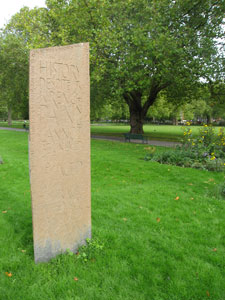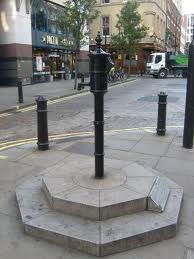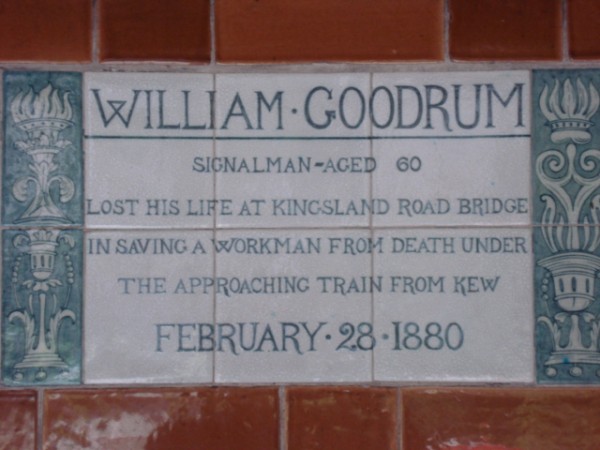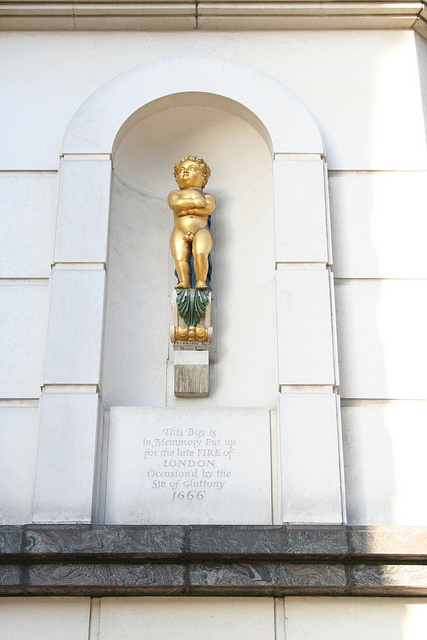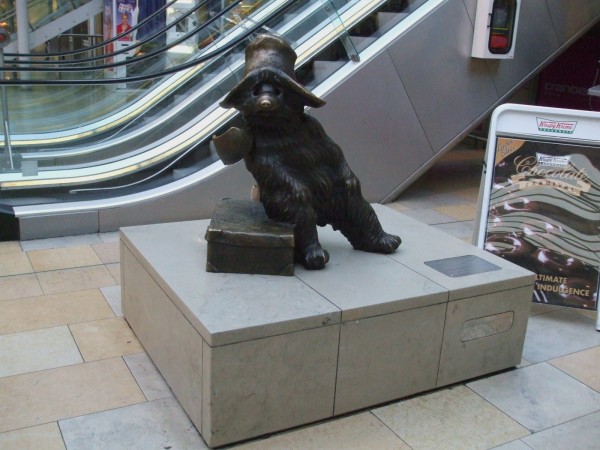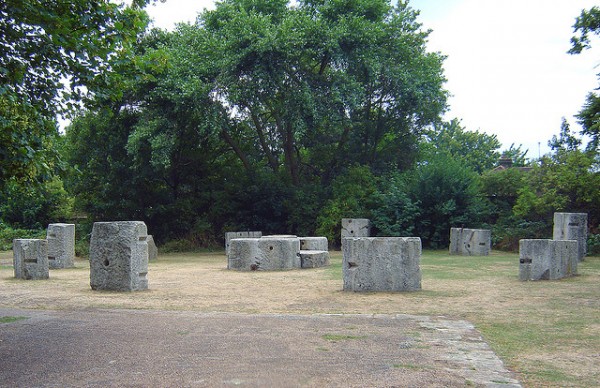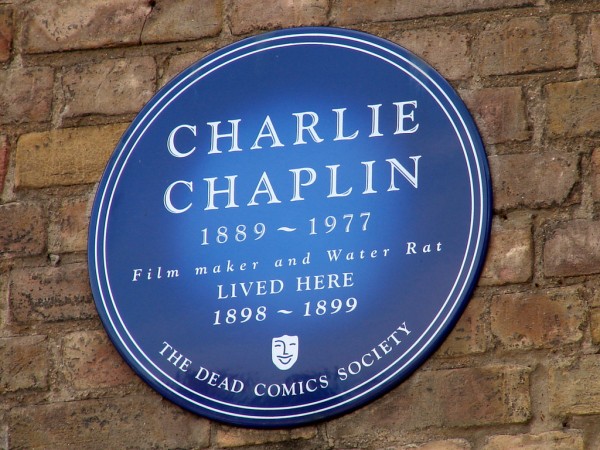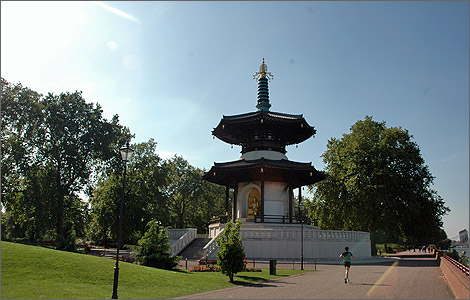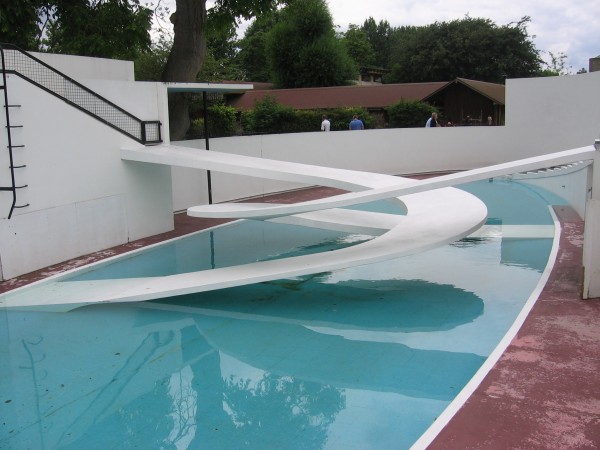You know London. Even if you’ve never been there, I bet you feel like you know it – there’s Big Ben, London Bridge, Trafalgar Square…you can picture it all. But it’s not all as it seems. Big Ben is actually called St Stephen’s Tower, London Bridge is a boring concrete structure often confused with its more elaborate neighbor Tower Bridge…and the most interesting sights are sometimes the ones missed out of the guidebooks. The Central London tour buses all take you round the same loop of Westminster but there’s so much more to see if you leave the tour buses and travel on public transport. Little bits of history are dotted all over the city, you just have to know where to find them.
Which is why we’ve put together the top 10 obscure London sights:
10. Kennington Park Memorial Stone
This unassuming stone in a South London park hides a wartime story as tragic and dramatic as any of the more famous ones. During the Blitz, a trench shelter was built in Kennington Park, for local residents to shelter in during the German air raids. The trenches were very basic and intended for short-term, emergency use, but ended up being used on a regular basis for up to 12 hours at a time. The design was somewhat flawed, with a local vicar noting that “any bomb falling inside the grid between the trenches would create an earth shock wave sufficient to crush the trenches”.
He was right – on the night of October 15th, a 50lb bomb fell on the trench and it collapsed in burying the occupants alive. People worked through the night clearing debris but it was in vain, and there were 104 deaths. Of the 104 to die, only 48 have ever been recovered, and the rest are still buried beneath the park somewhere. So when you visit the standing stone, you aren’t only visiting the memorial you’re also visiting the grave. It’s a sobering thought and a reminder of just how many people suffered in London during the Second World War.
9. Broad St Pump
There’s more death and suffering in our next tale – but this one had a remarkable outcome, with worldwide effects. In 1854, an outbreak of cholera in Soho, Central London, caused 127 deaths within a few days. Within a week, 616 people had died and many others were fleeing for their lives. At the time, it was believed that disease spread by breathing “bad air”.
Physician John Snow was skeptical of this theory and began working on his own. Mapping out the incidences of cholera in the neighborhood, he found that they all centered around the water pump on Broad Street (now Broadwick Street), which was later found to be next to a sewage-filled hole. Cholera had got into the hole from a baby’s nappy, which then got into the water system through the Broad Street pump. Snow removed the handle of the pump, which stopped people using it and which then stopped the outbreak (though some say it was in decline already). At the time, the authorities refused to believe it as they didn’t want the public to think they allowed the water to be contaminated. Later, however, Snow’s work became the basis of our modern understanding of how disease spreads.
The pump is still there today, outside a pub called The John Snow and it’s worth a visit to see the place where one man’s work changed modern medicine.
8. Memorial to Heroic Self-Sacrifice, Postman’s Park.
Postman’s Park is a green space in the City of London, which is unusual enough, but what makes this park really unusual is the monument to heroic self-sacrifice. Unveiled in 1900, it was designed to celebrate the sacrifice of ordinary people. This was revolutionary at the time, as monuments commemorated the great and notable, not the humble and unknown. Tributes included one to Alice Ayres, who “by intrepid conduct saved 3 children from a burning house in Union Street Borough at the cost of her own young life” shortly before her 17th birthday. Others were trampled by runaway horses or burnt in factory fires, but all saved others in doing so. It’s a humbling tribute to the common bravery of people who never knew they would get a tribute.
7. The Golden Boy of Pye Corner
Another statue to a disaster of the past, but a famous one this time. The Great Fire of London broke out in 1666 and raged for 5 days, leaving 70,000 homes destroyed by reportedly only 6 people dead. Because the fire started in a bakery, God-fearing Londoners blamed the fire on sin of gluttony and God’s wrath toward the city. This golden boy was erected on Pye corner, Smithfields, where the fire stopped, and he is suitably plump to illustrate the gluttony. Worth seeing as a piece of London history.
6. Paddington Bear Statue, Paddington Station
This is a very different piece of London culture, but a charming one nonetheless. The Paddington books, about a polite Peruvian bear, were first published in 1958 and have become a classic of children’s literature. He was named Paddington as he was found in Paddington station (with a label around his neck saying “please look after this bear”) and in 2000, Marcus Cornish created a statue of him in the station in his honor. If you’re passing through Paddington on the way to the West Country, make sure you look out for the bear, lounging by the escalators with his marmalade sandwich.
5. Hackney Henge (Nature’s Throne)
Now, here’s one that’ll take a bit of dedication to find. All tourists know about Stonehenge, right? Well meet East London’s equivalent – Hackney Henge, or as the locals call it ” ‘ackney ‘enge”. Its real name is Nature’s Throne and it’s a piece of artwork by Paula Haughney, made up of granite blocks that used to belong to an engine house. It’s a bizarre piece of art, but closer than Stonehenge.
Getting there still isn’t easy, though. It’s in a nature reserve called, unglamorously, “The Middlesex Filter Beds”, which is itself an offshoot of Hackney Marshes. The nearest tube is probably Leytonstone, which is quite some distance away, but there are rail stations closer (including the London Overground which is, confusingly part of the London Underground….but it’s overground). At least it’s on the edge of the marsh, so you don’t have to get your shoes too dirty…
4. Charlie Chaplin’s House
This one requires heading back to Kennington, South London although in reality it’s only a short hop on the tube from Central London. The famous actor and comedian Charlie Chaplin was born around here in 1889 and there are many blue plaques recognizing the places he lived. One house bearing a Chaplin plaque is in Methley St, which was a slum when he lived there but is now an upmarket terrace. It’s a good site to visit for classic film fans, and you can wander up to the Three Stags pub for a drink in “Chaplin’s Corner” afterwards.
3. Peace Pagoda, Battersea Park
Still in South London, we find this very lovely pagoda in the very lovely Battersea Park, next to the Thames. Constructed in 1985 by the Buddhist monk Reverend Gyoro Nagase, who spends his time there meditating and maintaining the pagoda. It’s a place of reflection and peace in a very busy city and is opposite the small but interesting children’s zoo.
2. Penguin Pool, London Zoo
On the theme of zoos, this is a bit of a curiosity in the middle of one of the most famous zoos in the world. Don’t be fooled into thinking that it’s where the penguins live – oh no, they have their funky new home at penguin beach, a specially-designed habitat for them. This penguin pool lies empty, a classic piece of art deco architecture that took little heed of what animals actually need. Designed in 1934 by Berthold Lubetkin, it is architecturally significant as one of the first structures to use reinforced concrete but the unwielding surfaces were bad for the penguins’ feet and the decision was eventually taken to move them away. So, the pool remains empty as, being a Grade 1 listed building, it cannot be demolished or significantly changed. It just stands as a tribute to groundbreaking architecture.
1. Albert Memorial, Kensington Gardens
This was almost missed off the list for not being obscure enough (it’s hardly subtle), but its location at the south-west corner of Hyde Park means that this glorious monument is often missed by tourists. Opened by Queen Victoria in 1872 to commemorate her beloved Albert, this is an ornate and towering sight with Albert himself glowing gold inside. It’s just a majestic sight that takes on Nelson’s column for grandeur and wins, hands-down but even the “most extensive” bus tours chose to miss it out as they turn off towards Harrods. Go and have a look – you won’t be disappointed.
